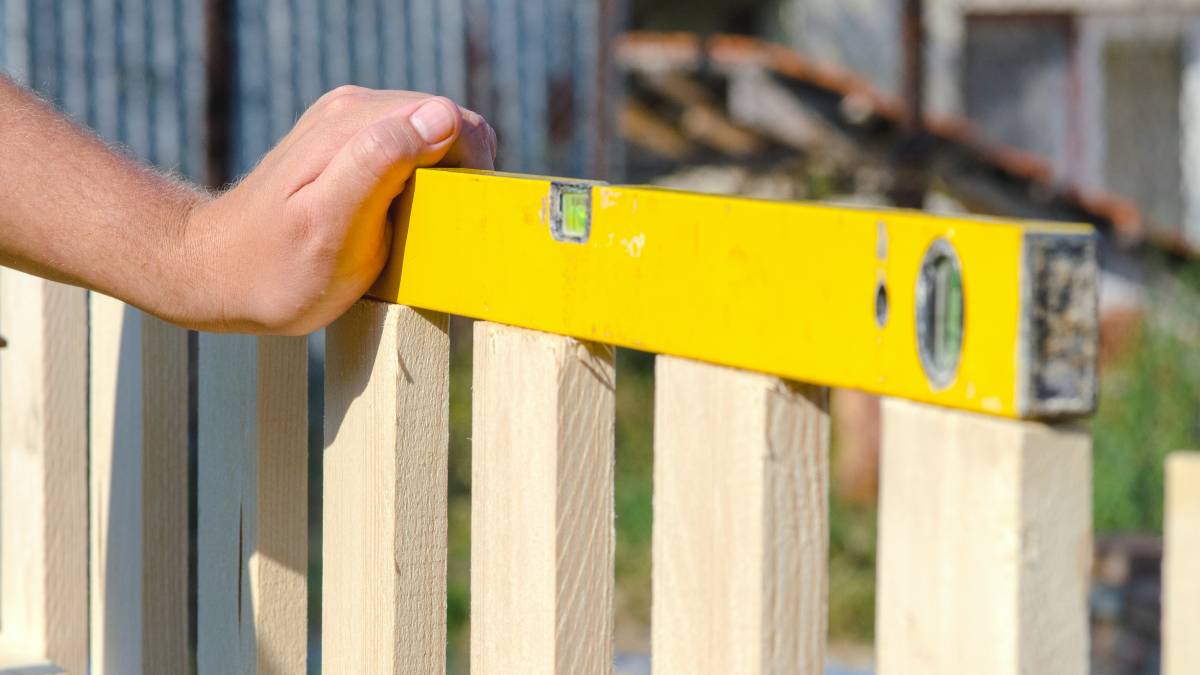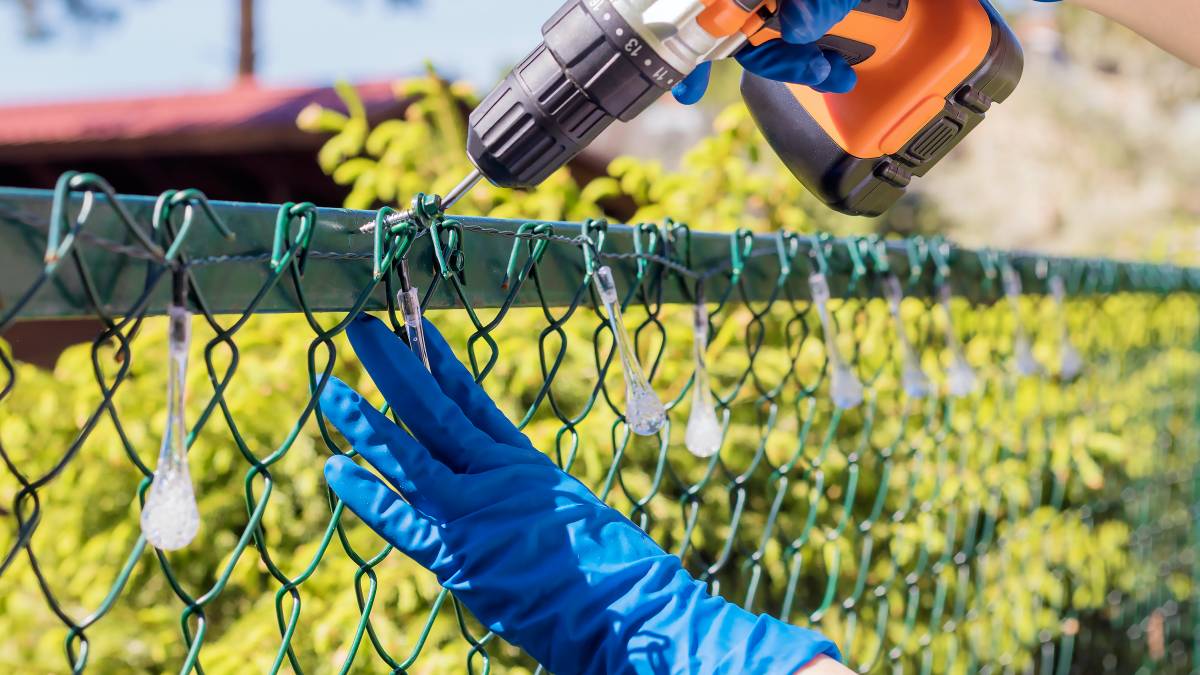- Home/
- Costs/
- Fence Installation/
- Fencing Cost Guide

How much does a fence cost in the US?
Get a free quote nowPost to find a price. It's free and only takes a minute.
Price guide
$15 - $95
low
$15
median
$43
high
$95
Last Updated on
Having neat and sturdy fences symbolizes a steady suburban life. Whether you’re creating a cottage-core vibe or looking at panels for privacy, a new fence can refresh any home. But how much does fencing cost?
The average cost of a new fence is $1 to $90 per linear foot, depending on the fence type and size of the backyard. If you're feeling fenced in by your budget, this guide will help you make an informed choice for your home.
Average prices of fence installation
Here's a table showing fence costs per foot to help you set a budget:
Fence material |
Average cost per linear foot |
Wood |
$17–$45 |
Vinyl |
$14–$45 |
Wrought iron |
$27–$55 |
Brick or stone |
$17–$45 |
Steel |
$15–$95 |
Factors affecting fence installation costs
Fence size
It comes as no surprise that size will influence the cost of fencing. To get an accurate quote, you need to consider both the height and width of your fence.
The proper width of your fence depends on how much space you want to enclose. For instance, the cost will be lower if you're only replacing a section of your existing fencing. You might only need to install a new front fence if you live in a semi-detached house. Once you determine the needed width, you can calculate the fence cost per linear foot through simple multiplication.
Also, height will determine the size and cost of the fence panels. In general, there are 4-foot fences (think waist height) and 6-foot fences (head height) as standard sizes. Add or subtract about 25%–35% of your budget if you want an 8- or 4-foot fence.
Fence type
The type of fence you choose will directly impact fence installation costs per foot. The cheapest type is a weave fence in terms of materials, while a slatted or lattice fence is generally more expensive.
You can also choose different types of posts, such as timber or concrete. Timber is often used for post and rail fences on traditional farms, while concrete block fences can offer privacy for backyard pools or gardens. The cost of post and rail fencing per linear foot is lower, so you can have a smaller budget.
Different fences and their costs
1. Timber
Timber fences are popular due to their affordability and aesthetic appeal. They make great garden fences and are very easy to install and repair.
While they’re great when you’re on a budget, timber fences require a little more maintenance than others. They need to be painted often to maintain their appeal and might crumble faster in harsher climates.
You might also like: Fence Repair Cost Guide |
2. Steel or colorbond
Steel or colorbond fences are durable and customizable, with many colors to choose from to match your home design. Their price ranges from $15 to $95 per linear foot, with many homeowners paying roughly $2,300 for a steel fence installation.
3. Wrought iron
Wrought iron fences are made of tall metal sheets. They're a very durable option that adds elegance and sophistication to your home. Thus, wrought iron fencing costs range from $27 to $55 per linear foot.
You might also like: Wrought Iron Fence Cost Guide |
4. Brick
Although a bit more expensive than other types of fencing, brick fencing is one of the most stable and durable types. Brick fences can be combined with other materials, such as iron, timber, or steel. Brick fencing is more expensive because it’s labor-intensive and requires skills and specific tools to install. Brick fences cost $17 up to $45 per linear foot.
5. PVC or vinyl
Aside from timber, PVC (polyvinyl chloride) or vinyl fencing is also one of the most cost-effective options for home fencing. PVC is also damage-resistant, making it a very convenient option for many homeowners. The cost of PVC fencing ranges from $14 and $45 per linear foot.
A white picket fence is a good example of this type, as it creates an open and peaceful border for your home. If this is your preference, you can book picket fence installation services to complete the job.
Additional costs when having fences installed
The more you know, the more you can manage your budget. When considering garden fence costs, think about the following variables:
Landscaping – If you need to dig holes for the fence, why not do a little landscaping to execute your vision for your outdoor space? You can find a local landscaper to transform your property.
Garden gate – Is it time for a gate upgrade? You can install a gate for around $100 while you’re at it.
Paint – It’s a good idea to seal your new fence panels with a coat of weatherproof paint. Expect to pay around $50 for a tub, which should coat ten panels. Alternatively, you can hire someone to paint your fence
You might also like: Fence Painting Cost Guide |
Minimizing fence installation costs
Reduce the height of the fence
Why are you building your fence? Perhaps you’re trying to keep small children and pets inside the boundary. If so, you probably don’t need an 8-foot high fence to do so. A 4-foot or standard fence should be enough.
Choose low-cost fence designs
Choosing a simple fence and post design will be cheaper than getting a custom-made metal fence. This keeps costs down and is a factor where you have more control over the length of the fence
Post a task for fence installation
Overall, putting up your dream fence doesn’t have to be stressful. From initial planning to the fence installation process, costs will be a combination of materials and labor. To get a more accurate estimate, skip fence cost calculators and get a personalized fencing quote when you hire a fence installation expert in your area. You can post a task on our platform to get started.
Find fence installaters, fast
Post a task
FAQs about fence installation
Installing a fence yourself always carries a risk, especially since materials can be heavy. Fence installation can be physically demanding, and you’ll need at least two people, even for smaller fences. It’s better to hire a professional for this extensive work to ensure safe and proper installation.
Some titles don’t imply ownership, while others do. In some cases, fences would be a joint responsibility of both neighbors. If you’re unsure, check your land and registry documents. If yours aren’t clear, talk to your neighbors to check the boundary lines.
Some municipalities require property owners to apply for a permit to build a fence, while others don’t. In states like California, property owners are required to present a 30-day written notice along with the details about the installation to their neighbors.
Related price guides

How much does fence repair cost?
Read more

How much does wood fencing cost?
Read more
Related articles
Let's do this!
It's free and takes only a minute.







